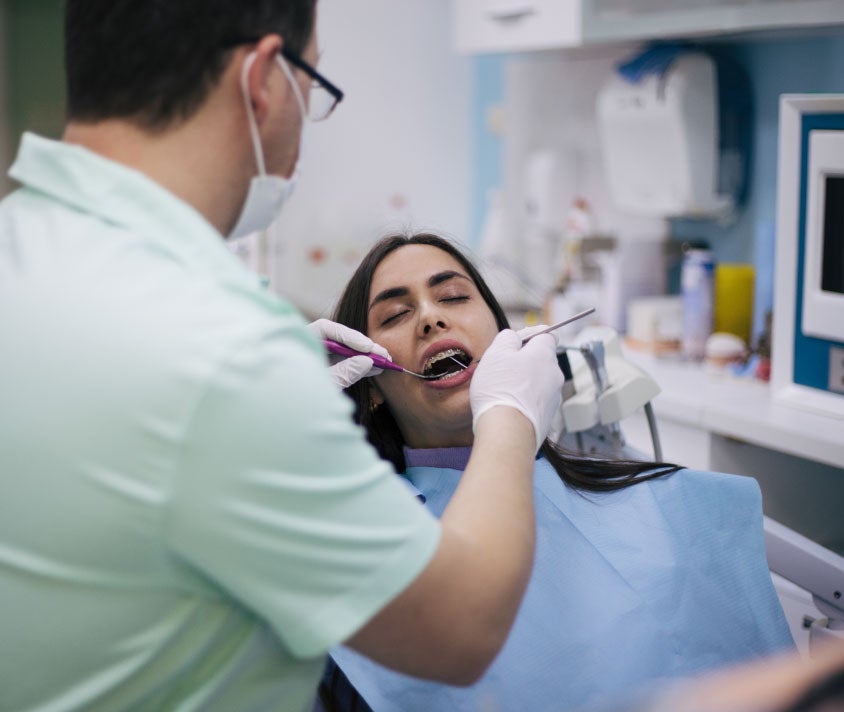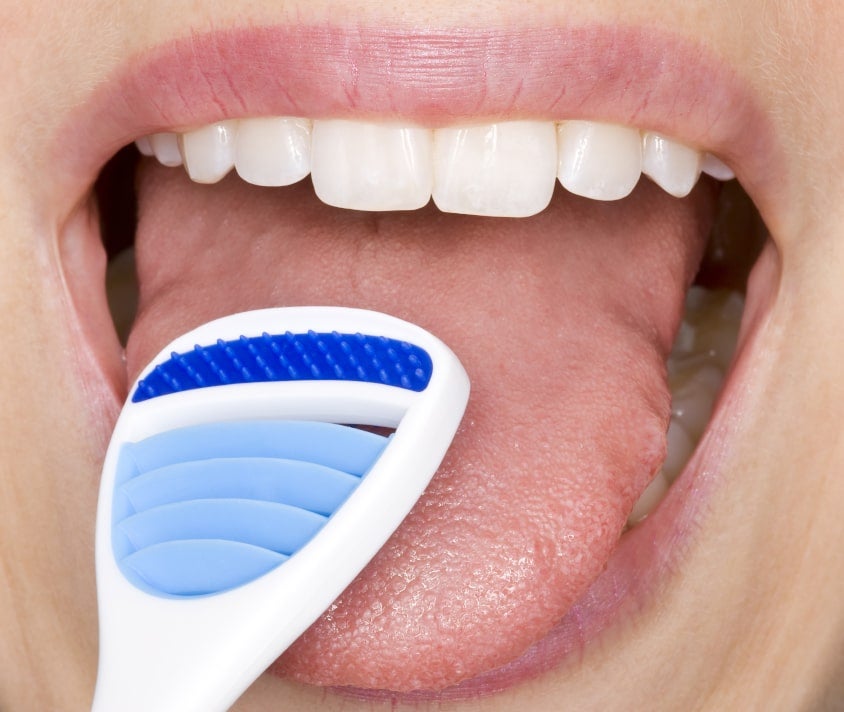This article will take you 6 minutes to read
From an early age, every child is taught to brush their teeth properly twice a day to keep them healthy. The correct brushing technique is often even taught in workshops with dental professionals at elementary schools. Thoroughly brushing your teeth twice a day is undoubtedly the foundation of good oral hygiene. However, what very few people know is that the toothbrush only removes deposits from around 70 percent of the tooth, because a third of the surface consists of interdental spaces.
This is where dental floss comes into play. It is the only way to remove plaque in the interdental spaces between teeth and within the bridges and implants that you cannot reach with a toothbrush. Not all dental floss is the same- and in addition to waxed and unwaxed threads, there are numerous different types that are tailored to different oral needs.
The right dental floss
Choosing the right instrument depends on the structure and condition of the tooth. Ask your dentist for advice and, if necessary, show you how to correctly use it in your mouth.
Dental floss (waxed or unwaxed) is suitable for narrow teeth. Waxed dental floss slides well and does not produce any fibers. You need to be very careful with the unwaxed floss beacuse it is thicker. This makes it a little more difficult to handle, but the fibers that form help with cleaning. And you can test the cleaning effect with it, because it makes a squeaking noise on clean teeth. A pack of any kind is usually quite efficient at around approx. 20 to 100 m. A dental floss holder is practical, especially for beginners, and is also suitable for braces and fixed dentures.
If your teeth are further apart, interdental brushes are often the better choice. But a combination with dental floss can be useful.
The Proper Use of Dental Floss
You should floss once a day preferably before going to bed, to help remove plaque from between your teeth. It doesn't matter whether you do this before or after brushing your teeth. A bit of practice and sensitivity are required here, because on the one hand the spaces between the teeth, along with the tooth neck and gum line should be cleaned as completely as possible, and on the other hand teeth and gums should not be affected.
You will need about 50 centimeters of thread. Hold it with your between thumb and index finger. Alternatively, you can wrap the thread around your middle finger. Move the floss back and forth and up and down through the interdental spaces between the teeth. You should take a new piece of thread for each gap. Be thorough but not too aggressive to avoid injuring your gums. The movements alone are not enough, because the dental floss must also be adapted to the curves of the teeth. To do this, simply bend the thread around and press it against the respective tooth. It is important to remove the plaque from the interdental spaces between the teeth.
Why Do Gums Become Sensitive After Flossing?
Experiencing sensitivity in your gums after using dental floss can be concerning.Sensitive gums can be a sign of discomfort or other underlying issues that should not be ignored, as they can indicate gum problems. In extreme cases, if left untreated, this can lead to more serious dental issues.
It's normal for your gums to feel a little discomfort when you first floss, so there's nothing to worry about. Healthy gums provide enough resistance and should not be sensitive, especially after flossing regularly. However, experiencing sensitivity at the beginning can also be a sign of existing gum problems. If the sensitivity does not subside after a period of regular flossing, you should definetly see your dentist for advice. Persistent sensitivity might indicate that there are underlying gum problems that need to be addressed.




